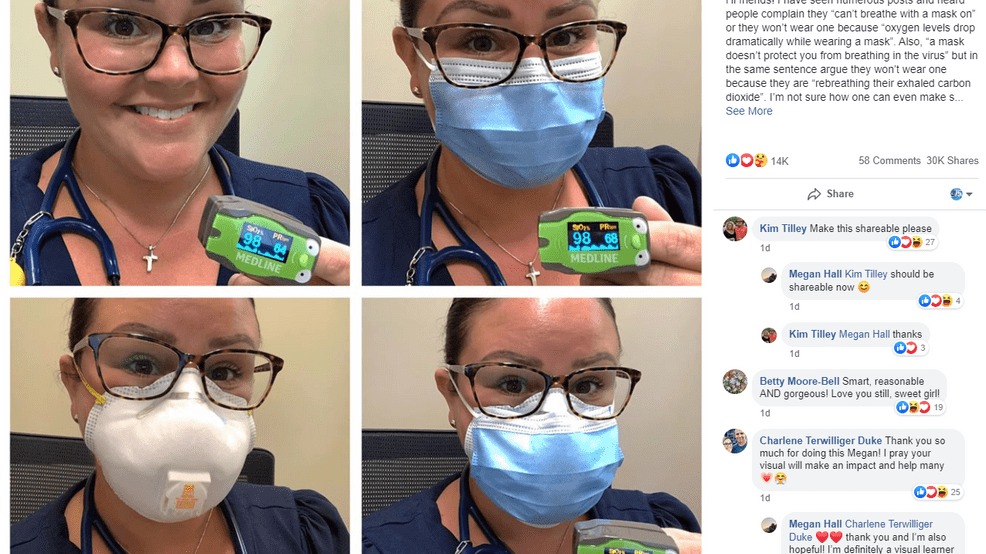Busted! Examining 5 Myths About Coronavirus Cases
By Jordan Eller

As coronavirus cases begin to spike to record levels in America, dangerous theories and misinformation are also on the rise.
As members of the life science industry, the Forma team is dedicated to the continued education regarding the current pandemic. While this post may have little to do with marketing, we feel that we have an obligation to share knowledge, research, and data on health-related subjects. This includes examining and dispelling myths that have begun circulating due to the increased levels of Coronavirus cases.
If you’re interested in how your business can strengthen its position during this crisis, we encourage you to visit our new Marketing and Strategy During Covid-19 page.
Without further ado, let’s begin examining some of the claims being circulated about the rise in Coronavirus cases, starting with…
“Cases are rising among young people because they’re more susceptible”
We’ve seen numerous reports that reflect increased Coronavirus cases among young people.
CDC figures show younger patients are a widening percentage of total coronavirus hospitalizations, with those in the 18-to-49 age group growing from about 27 percent of hospitalizations the week ending March 7 to 35 percent this past week. — Washington Post
Simply put, this is not because young people are not “more susceptible” to the virus. This increase in coronavirus cases is due to behavior, not age. Most older people are still sheltering in place, whereas a disproportionately high level of younger people are going to parties, bars, beaches, and similar locations without adhering to health precautions.
Being older doesn’t somehow make you more resistant to the virus, and being young doesn’t make you more susceptible. Like most things, it all comes down to the choices you make.
“Cases are up, but deaths are still low”
This is a dangerous bad-faith argument that is woefully misguided. Deaths are a lagging indicator. Think of how long the average case of Covid-19 takes to kill the patient. The deaths being reported today reflect infections from at least 3 weeks ago, when new cases were a fraction of what they are now.
“There are more cases. There are more hospitalizations in some of those places and soon you’ll be seeing more deaths. Even though the deaths are coming down as a country, that doesn’t mean that you’re not going to start seeing them coming up now.” — Dr. Anthony Fauci, director of the National Institute of Allergy and Infectious Diseases
There’s no way to know the true immediate impact of the current spike, but if new cases are 8-10 times higher in some places, the safe assumption is that deaths will be 8-10 times higher as well.
“More Coronavirus cases are due to more testing”
This is true at least in part, so look at more telling statistics to level the playing field and compare apples to apples.
Disconcertingly, in the past two weeks, more than 10 states have reported increases in both new cases and positivity rates. These trends are most pronounced in Alabama, Arizona, Arkansas, Florida, Georgia, North Carolina and Texas. These states are all doing more testing than in previous weeks, but if the infection rate were holding steady, we’d expect the positivity rate to at least stay level. — Jennifer B. Nuzzo, epidemiologist at Johns Hopkins Bloomberg School of Public Health
Focus on the percentage of tests that come back positive and the number of hospitalizations are the two statistics that most experts rely on, and both are on the rise across the country.
“The increase in cases is due to the protests occurring in America”
At the time of writing, there are a series of country-wide protests being conducted in both rural and major metropolitan areas. Many people are attributing the rise of Covid-19 cases to these gatherings, but according findings from a study conducted by the Director of Climate and Health at Colombia University, this is not the case.
Shaman said that he and his team at Columbia modeled the demonstrations as they were occurring, to see whether they could lead to a surge in COVID-19 infections. They ran their model through three scenarios, each with a different premise on how much masks and the open air would suppress transmission of the virus. In the scenario of lowest suppression, there should have been a substantial bump of cases by now, nearly three weeks after the protests began. In the medium scenario, there should have been a slightly lower bump. In the scenario where masks and open air suppressed the transmission to the greatest degree, there was no bump. “That’s what we’re actually seeing. The most optimistic scenario turned out to be most accurate.” — Jeffrey Shaman, director of the climate and health program at Columbia University, via Slate
“It’s harder to breathe with a mask on”
This is patently, academically, empirically false. There have been a wide variety of videos shared on social media and Reddit showing individuals refusing to wear facemasks while claiming they “have a breathing problem”. Unfortunately for them, this excuse has no bearing in reality, as a doctor in South Carolina eagerly demonstrated.

Dr. Megan Hall was happy to debunk any claims that facemasks reduce oxygen levels.
“I’ve been seeing a lot of comments on Facebook, or hearing from patients or other people with concerns about detriments to their health regarding wearing a mask,” Dr. Hall said.
So, she decided to record her oxygen levels and heart rate four times: once without a mask on, once after five minutes wearing a surgical mask, once after five minutes with an N95 mask on, and then once after five more minutes wearing both masks. In the end, all of her recordings came out to be near identical. — WPDE News
Be safe! Be smart!
This post is not meant to incite panic, but rather provide an examination on a few myths we’ve seen in the public discourse. We’re still in the grip of this deadly virus, and there’s no safer vaccine than common sense right now.
If you’re interested in how Forma can help position your brand for success during this turbulent time, please don’t hesitate to contact us or visit our new Marketing and Strategy During Covid-19 page.





